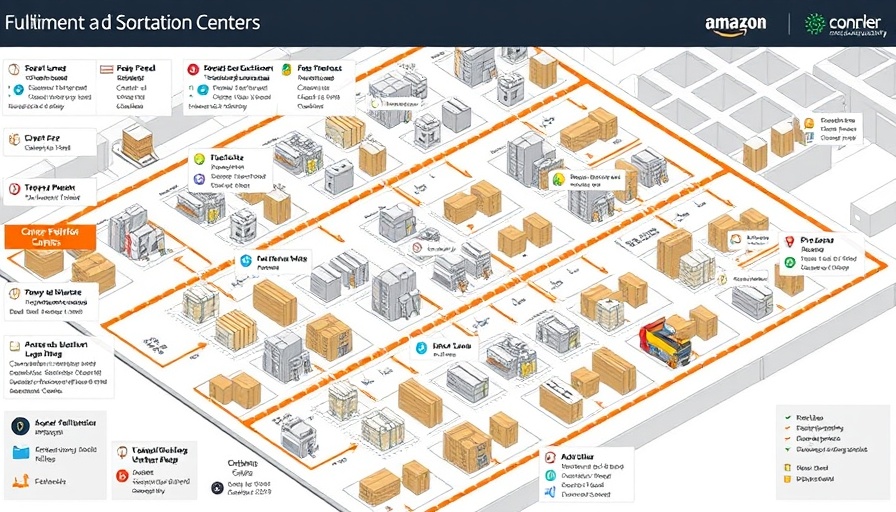
The Future of Robotics: Introducing DeepFleet
Amazon has made significant strides in revolutionizing the logistics industry with the recent launch of DeepFleet, a cutting-edge AI model suite poised to transform how mobile robots operate in warehouses. As the world’s largest operator of industrial mobile robots, having deployed over a million units, Amazon is harnessing the power of DeepFleet to optimize robot coordination and efficiency. But what does this mean for small and medium-sized businesses (SMBs) looking to navigate the age of automation?
Optimizing Operations with AI
DeepFleet represents a pivotal advancement in the use of foundation models within robotics. These models rely on vast amounts of operational data to glean insights that enhance the performance of mobile fleets. For SMBs, this level of predictive intelligence could lead to reduced operational congestion and improved workflows across logistics processes. With the promise of increasing efficiency by as much as 10%, the implications for operational cost-saving are profound.
A Look at How DeepFleet Works
DeepFleet comprises four specialized architectures aimed at improving multi-robot interactions. Here's a quick overview of its innovative approaches:
- Robot-Centric (RC) Model: This model focuses on individual robots, utilizing local environment data to forecast movements and actions. It's particularly effective in environments with high robot density.
- Robot-Floor (RF) Model: Integrating robot state data with comprehensive floor features, this model enables cross-team synergy, ensuring smoother operational flow within a warehouse.
While the details of these models may seem technical, the real takeaway for SMBs is how such advancements can streamline operations and enhance productivity through smarter automation.
The Benefits of AI-Powered Coordination
Implementing AI solutions like DeepFleet can drastically improve logistical operations. Through advanced trajectory predictions and proactive planning, Amazon's fleet can mitigate delays, adapt to changes in real-time, and manage resource allocation effectively. For smaller businesses, this means better inventory management and reduced costs associated with delays or mismanagement within warehousing processes. The ability to predict and adapt allows businesses not only to react to current dynamics but to prepare for them ahead of time.
A Competitive Edge for SMBs
As competition intensifies in today's market, SMBs must leverage technology to stay ahead. Adopting similar AI models for their logistical needs could provide significant advantages. Many businesses can also benefit from partnerships with tech providers specialized in AI, allowing them to integrate advanced systems that enhance their operational fingerprints exponentially.
Real-Life Applications and Case Studies
Various industries can learn from Amazon’s applications of DeepFleet. For instance, retailers looking to enhance warehouse capacity could adopt trial versions of predictive modeling systems, optimizing the placement of products and dynamic workforce allocation. Such advancements anchor flexibility in customer service and fulfillment strategies, which is crucial in our increasingly fast-paced world.
Trends in Robotics and AI for Future Insights
The integration of robotics and AI is not merely a trend but a growing certainty in the logistics field. Future predictions suggest that as AI evolves, the complexity of tasks that robots can handle will increase, diversifying their applications across sectors. For SMBs, keeping abreast of these developments and preparing to adapt accordingly will be essential for thriving in an automated future.
Final Thoughts: Embracing AI for Growth
As highlighted, Amazon's DeepFleet is not only an advancement tailored for massive-scale operations but also serves as a blueprint for small and medium businesses. Adopting such technologies can dramatically streamline operations, enhance efficiency, and establish a competitive edge in the market. Businesses that dig into the capabilities of AI and mobile robotics now will be well-positioned to benefit from these innovations, paving the path for scalable and optimized growth.
Embracing technology like DeepFleet could be the key for your business to thrive in the evolving landscape of automation. Don’t wait; begin exploring AI solutions now to stay ahead of the curve!
 Add Row
Add Row  Add
Add 



Write A Comment